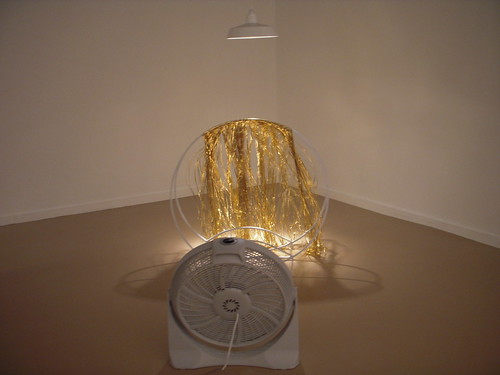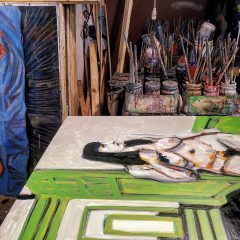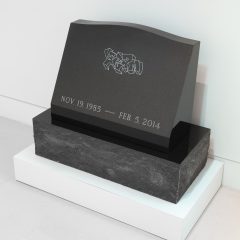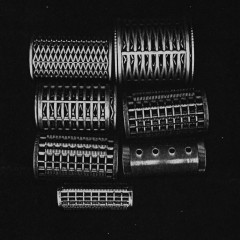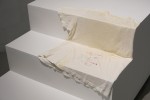This week’s Weekly has my review of A Closer Look at Arcadia. Below’s my original copy restoring more than 200 words that were cut by the paper….and some pictures. And here’s Libby’s post on the show.
Linda Yun’s Incident. Here’s the little video I made and put at flickr as an experiment in video hosting alternatives to YouTube.
Beautiful conceptual art is a rarity. But in Arcadia’s group show “A Closer Look 7” Linda Yun‘s “Incident,” made of simple materials – a fan, a light, some mylar strips — is like the pot of gold — and the rainbow, too.
“A Closer Look 7,” guest-curated by Temple Gallery Exhibitions Director Sheryl Conkelton, catches up with six artists whose work was previously shown in one of Arcadia’s Biennial Works on Paper shows. Yun (2005), Phillip Adams (2005), James Johnson (2005), Kocot and Hatton (5 times) and Lucy Pullen (2001) are all conceptual artists whose deadpan and aesthetically spare works make for a quiet show. If you’re looking for juice here –pizzaz, zaniness, fun – bring it with you. You’ll need it to puzzle out meaning, conjure memories and take your mind off-site to fully experience these works. Looking alone won’t do.
Yun, a Vox Populi member, (as is Johnson) creates a meditative work that should be less than the sum of its parts. The ordinary materials don’t make for beauty: It’s the reflected light on the walls and floor and the sound of the undulating gold mylar strips that are captivating, like a babbling brook in the conceptual woods. Yun’s piece – unlike Duchamp‘s found object sculpture – is about beauty at the same time that it is beautiful, capturing beauty’s languor, mystery and fleetingness in the reflected light and quiet mesmerizing sound it creates. And while the artist might be mocking beauty, I’d rather believe that she is pro-beauty. For all the Home Depot anti-beauty in it, the piece raises issues about human yearning for aesthetic pleasure. It’s Romantic and melancholy. Caspar David Friedrich in conceptualist sheep’s clothing.
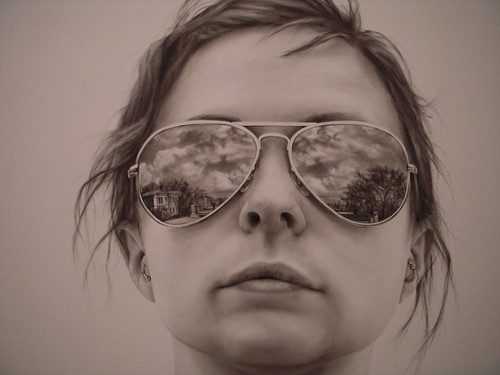
Some day beauty won’t have to sit in a corner like a dunce, but Incident – in the gallery’s far corner — is actually perfectly sited. Coming upon the piece after rounding the partition wall the piece is an unexpected delight — like discovering a full moon rising when you round the bend on the expressway.
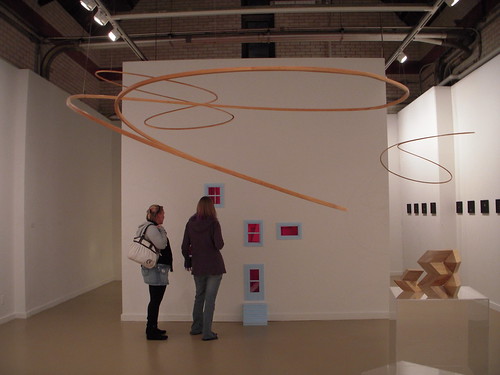
James Johnson (rear) House 2008. foam insulation, existing wall, 133x144x48″
pink neon sign inside says “I can give you anything you want.”
Lucy Pullen (foreground)
Being and Event (on pedestal) 2008. milled poplar. 8x3x3.5″, 10 from edition of 750
Hole, 2008. steam-bent ash; 3 from edition of 8. each 41x15x0.5″
Absence is a big presence in the show. Yun’s work is about creating beauty from the absence of beauty. Lucy Pullen‘s three gestural curlicues of steam-bent ash, each titled “Hole,” suggest the real work of art is not the wood she’s shaped but the emptiness encircled by the wood – ie nothing. James Johnson‘s “House,” too, is about absence — of truth. Mini windows and a door cut into the partition wall hide a pink neon sign that reads “I can give you anything you want.” The words immediately bring to mind the predatory lending practices of banks and mortgage companies that caused havoc with peoples’ lives and helped collapse the economy. This false promise is capitalism’s best pitch woven into the fabric of every ad, promotion and credit card.
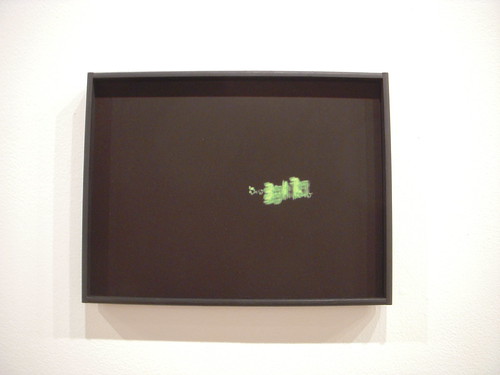
Kocot and Hatton, Night/Time 2007-8. 16 pigment-based digital prints each 8×10 1/2″ framed (detail)
Collaborators Kocot and Hatton are all about the absence of competition and the absence of complete consciousness while making art. It’s been their subject for many years. The conceptual couple, known for their nocturnal drawings made while partially asleep, are showing digital photos of the the led readout on their bedside clock. Taken in the wee hours, the fuzzy pictures of 3:17 and 12:55, whatever else they may be, are great insomniac icons. Virtuoso photo-realist portraits by Phillip Adams depict three young hipsters, Sara, Chase and Wil, all wearing mirrored aviator sunglasses. Delicately drawn in charcoal on paper, the trio’s uniformly unsmiling visages lack affect. These people are absent from the rich world reflected in their glasses.
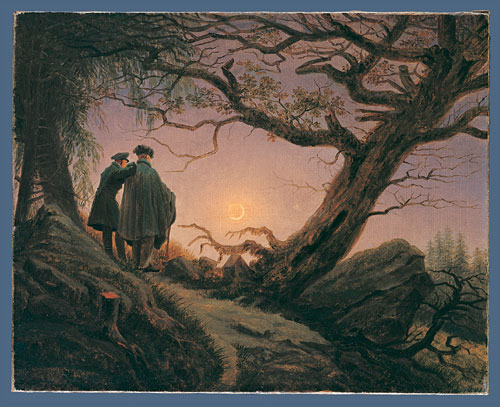
Two Men Contemplating the Moon, ca. 1830
Caspar David Friedrich (German, 1774–1840)
Oil on canvas; 13 3/4 x 17 1/4 in. (34.9 x 43.8 cm)
The Metropolitan Museum of Art, New York, Wrightsman Fund, 2000 (2000.51)
As a show about beauty and absence – twin obsessions of today’s art world — A Closer Look 7 rides the zeitgeist like an experienced traveler.


